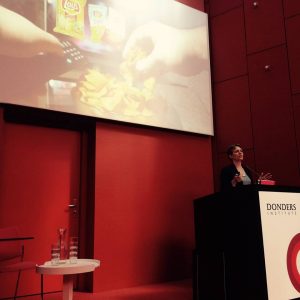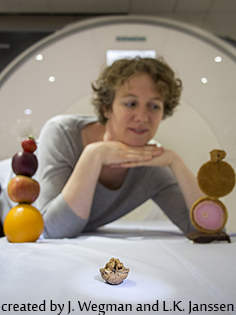This post is also available in Dutch.
In a recent blog post, Lieneke told us why it’s so difficult to change our habits. This time she gave us two suggestions for how to actually change our habits.
After Lieneke’s PhD defense, there was a symposium where researchers shared their latest experimental findings on habits. In the following post, Lieneke has highlighted the two main take-away messages from the symposium for us: First, try to directly change your actions; and secondly, be mindful of your choices.
Directly target your tendencies to act
“At the symposium, Dr. Harm Veling talked about implicitly creating the good habit of choosing healthy snacks and avoiding unhealthy snacks. In an experiment he and his colleagues carried out, people were trained to press a button to get a healthy snack and withhold pressing a button for an unhealthy snack. Subjects were not aware of this training themselves. The idea is that since habits are insensitive to new goals, we should directly deal with our automatic behavioral tendencies. After this training, people chose healthy snacks a little more often than unhealthy snacks. The effects were small, however, so this is not our new holy grail to fighting obesity.”
The main take-away is that if you want to change a habit, you should directly change your actions. You can create a new, good habit to replace the old one. For instance, if your habit was to eat chocolate after dinner, you may choose to go for a walk instead. This way, you create a new habit to ‘overwrite’ the old one.

Dr. Esther Aarts giving a talk at Lieneke’s graduation symposium.
Image credits: Lieneke Janssen
Be mindful of your actions
“A different talk at the symposium, by Dr. Esther Aarts, was about being mindful of our choices. Practicing mindfulness could help us learn to catch ourselves before automatically doing something out of habit, and gives us a choice again. Mindfulness is defined as paying attention in a particular way: on purpose, in the present moment, and without judgment. It is practiced through regular meditation exercises and is thought to decrease reactive, automatic behavioral tendencies. By being more aware of when our attention drifts (e.g., when we pass by a bakery and smell freshly baked cake) and our internal signals (Am I hungry at all? Is it my stomach or my eyes that are hungry?), we create space in our minds. That may very well be the space we need to decide whether we follow the usual path or we make a different decision. This approach is still open for discussion, and much more research is needed before we can know for sure that it works. For now, however, the results appear promising.”
Here, Lieneke suggests that if we are aware of what is driving our decision, we may be able to make a different choice. For instance, if you see a delicious cookie, your mouth may start to water, so you reach for the cookie and eat it. Often this process goes unnoticed. But if you are aware of it, this may give you a moment when you notice what is going on. You may also remember that you want to be healthy, so you may choose to follow that goal instead of the automatic desire to eat something sweet, so you may choose to not eat the cookie.

Dr. Aarts contemplating food and cognition
Image obtained with permission from Dr. Esther Aarts
Written by Marisha. Edited by Marpessa.
